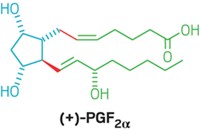Advertisement
Grab your lab coat. Let's get started
Welcome!
Welcome!
Create an account below to get 6 C&EN articles per month, receive newsletters and more - all free.
It seems this is your first time logging in online. Please enter the following information to continue.
As an ACS member you automatically get access to this site. All we need is few more details to create your reading experience.
Not you? Sign in with a different account.
Not you? Sign in with a different account.
ERROR 1
ERROR 1
ERROR 2
ERROR 2
ERROR 2
ERROR 2
ERROR 2
Password and Confirm password must match.
If you have an ACS member number, please enter it here so we can link this account to your membership. (optional)
ERROR 2
ACS values your privacy. By submitting your information, you are gaining access to C&EN and subscribing to our weekly newsletter. We use the information you provide to make your reading experience better, and we will never sell your data to third party members.
Synthesis
A New Hydroxyl Protecting Group
(2-Nitrophenyl)acetyl works well at masking hydroxyl moieties in the synthesis of sugars
by Bethany Halford
April 12, 2010
| A version of this story appeared in
Volume 88, Issue 15
To manage a multitude of hydroxyl groups in sugars, carbohydrate chemists play a shell game of sorts, shuffling protecting groups to expose each alcohol at the right step in a synthesis. Researchers at the Hungarian Academy of Sciences have introduced a new protecting group to the mix (Org. Lett., DOI: 10.1021/ol100562f). Katalin Daragics and Péter Fügedi report that (2-nitrophenyl)acetyl (NPAc) works well at masking hydroxyl moieties. The NPAc groups are prepared from (2-nitrophenyl)acetic acid, an inexpensive commercially available compound, or the corresponding acid chloride or anhydride. The NPAc ester stands up to a series of common carbohydrate transformations and can be selectively removed in the presence of other popular hydroxyl protecting groups, such as tert-butyldimethylsilyl, levulinoyl, 9-fluorenylmethoxycarbonyl, naphthylmethyl, and p-methoxybenzyl. The deprotection step (shown) is what’s known as an assisted cleavage: Reduction of the auxiliary nitro group with zinc and ammonium chloride produces an ester of (2-aminophenyl)acetic acid, which intramolecularly attacks the ester bond to form an indolinone, releasing the alcohol in the process.





Join the conversation
Contact the reporter
Submit a Letter to the Editor for publication
Engage with us on Twitter